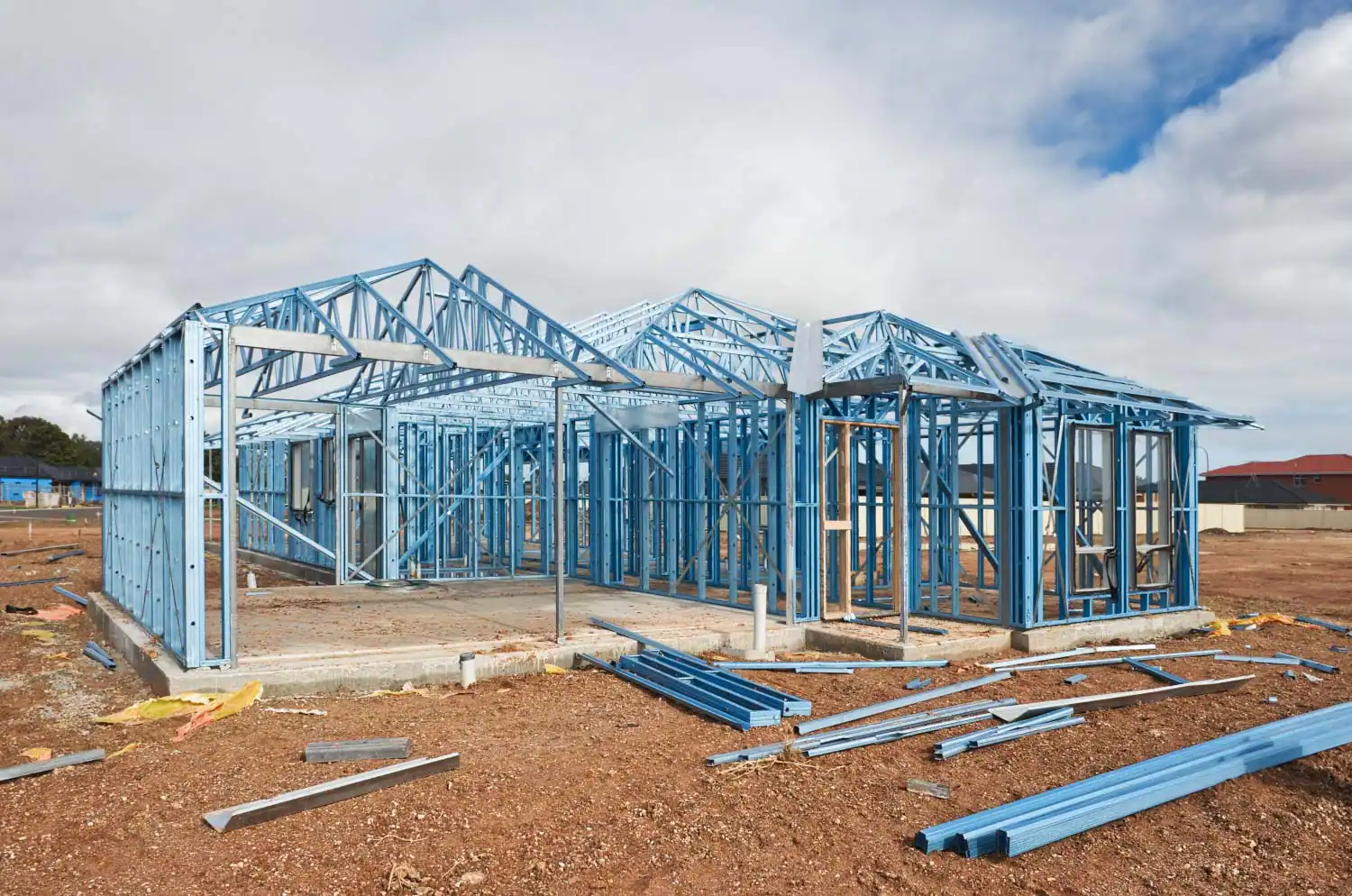Portal frame buildings have been gaining popularity in the construction industry for many reasons. They are versatile, cost-effective, and quick to erect. A portal frame is a structural system that consists of horizontal beams and vertical columns connected to form a frame. This article will provide a comprehensive guide to portal frame buildings, covering their features, benefits, and drawbacks.
The need for cost-effective and efficient building structures has led to the popularity of portal frame buildings. They have become an attractive option for a wide range of applications, including commercial, industrial, and agricultural buildings. This article will explore the features, benefits, and limitations of portal frame buildings, as well as their design, construction, and safety considerations.
2. What are Portal Frame Buildings?
Portal frame buildings are a type of structural system that uses a series of columns and horizontal beams to create a framework. The beams and columns are connected to form a rigid structure that can withstand loads from various directions. The portal frame design is widely used in building construction due to its versatility, simplicity, and cost-effectiveness.
3. Types of Portal Frame Buildings
Portal frame buildings can be designed to suit a range of applications and site-specific requirements. There are two main types of portal frame buildings:
- Single Span Portal Frames: These are used for small buildings with a span of up to 20 meters.
- Multi-Span Portal Frames: These are used for larger buildings with a span of over 20 meters.
4. Advantages of Portal Frame Buildings
Portal frame buildings offer several advantages over other types of building structures, including:
- Cost-effective: Portal frame buildings require fewer materials and labor hours compared to other structural systems, making them cost-effective.
- Quick to erect: Portal frame buildings can be erected quickly, which reduces construction time and labor costs.
- Versatile: Portal frame buildings can be designed to suit a range of applications and site-specific requirements.
- Low maintenance: Portal frame buildings require minimal maintenance, which reduces long-term costs.
- Fire-resistant: Portal frame buildings are fire-resistant, making them suitable for industrial and commercial applications.
- Energy-efficient: Portal frame buildings can be designed to incorporate energy-efficient features, reducing energy costs.
5. Limitations of Portal Frame Buildings
Portal frame buildings also have some limitations, including:
- Limited span capacity: Portal frame buildings have limited span capacity and cannot be used for large structures.
- Limited architectural features: Portal frame buildings have limited architectural features and are not suitable for complex designs.
- Limited durability: Portal frame buildings may be less durable than other structural systems and require regular maintenance.
6. Design and Construction of Portal Frame Buildings
The design and construction of portal frame buildings require careful consideration of site-specific requirements and building codes. The process involves the following steps:
- Site assessment and analysis: The site must be assessed to determine its suitability for the proposed building.
- Design development: The building must be designed to suit the site-specific requirements and comply with building codes.
- Structural analysis: The structural system must be analyzed to ensure it can withstand loads from various directions.
- Fabrication and erection: The components of the portal frame building are fabricated off-site and then erected on the building site.
7. Applications of Portal Frame Buildings
Portal frame buildings are widely used in the construction industry for various applications, including:
- Commercial buildings: Portal frame buildings are used for retail stores, restaurants, and office buildings.
- Industrial buildings: Portal frame buildings are used for factories, warehouses, and manufacturing plants.
- Agricultural buildings: Portal frame buildings are used for barns, storage sheds, and livestock housing.
- Recreational buildings: Portal frame buildings are used for sports facilities, community centers, and event venues.
8. Maintenance and Repair of Portal Frame Buildings
Maintenance and repair of portal frame buildings are essential to ensure their longevity and safety. Regular inspections and maintenance can help identify and address any structural issues. Common maintenance activities include cleaning gutters, inspecting roofing, and checking for any signs of corrosion or wear.
9. Energy Efficiency of Portal Frame Buildings
Portal frame buildings can be designed to incorporate energy-efficient features, such as insulation, efficient lighting, and HVAC systems. These features can reduce energy costs and improve the building's environmental performance.
10. Sustainability of Portal Frame Buildings
can be designed to incorporate sustainable features, such as green roofs, rainwater harvesting systems, and renewable energy sources. These features can reduce the building's environmental impact and improve its sustainability.
11. Safety Considerations for Portal Frame Buildings
Portal frame buildings must be designed and constructed to meet safety standards and comply with building codes. Safety considerations include fire safety, wind resistance, and earthquake resistance.
12. Future of Portal Frame Buildings
Portal frame buildings are likely to continue to be an attractive option for the construction industry due to their versatility, simplicity, and cost-effectiveness. With the increasing focus on sustainability and energy efficiency, portal frame buildings are also likely to incorporate more sustainable features and technologies.
13. Conclusion
Portal frame buildings offer a cost-effective, versatile, and efficient structural solution for various applications. They have several advantages over other structural systems, including quick erection times, low maintenance requirements, and energy efficiency. While they have some limitations, careful design and construction can help mitigate these issues.


No comments yet